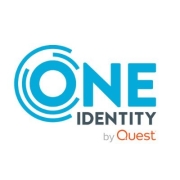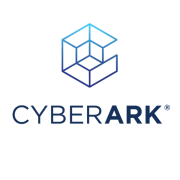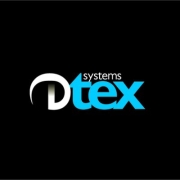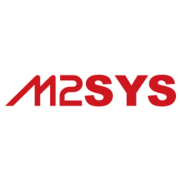User Entity Behavior Analytics (UEBA) is designed to detect anomalies and provide visibility into potential threats by analyzing patterns in user activity data. It helps organizations identify potential security risks by monitoring user and entity behavior.
UEBA solutions focus on understanding typical user behavior and pinpointing deviations that could indicate insider threats, compromised accounts, or other malicious activities. Leveraging machine learning and advanced analytics, these systems provide insights into behavioral anomalies, enhancing security teams' ability to respond swiftly to threats. UEBA's ability to produce comprehensive behavior profiles enables it to differentiate between normal fluctuations and genuine security alerts.
What features define User Entity Behavior Analytics solutions?UEBA solutions find application across industries such as finance, healthcare, and retail, where large volumes of sensitive data necessitate robust security measures. They provide tailored analytics that cater to the unique demands of each sector, ensuring compliance and safeguarding proprietary information.
Increasing cyber threats necessitate advanced systems like UEBA, which offer essential insights by decoding complex behavior patterns. This capability makes UEBA invaluable for organizations seeking to enhance their defense mechanisms and safeguard their IT infrastructure.












































User entity behavior analytics, otherwise referred to as UEBA, slowly emerged to replace UBA, offering more powerful solutions. As the threat landscape grew, “entities” were added to UBA to monitor malicious behavior beyond the user level. While UBA can detect human behavior within a network, UEBA can model behaviors of humans as well as the machines within networks, including devices, in addition to applications as well as networks, providing complete visibility. When behavioral abnormalities are associated with an entity (i.e. a particular IP address), attacks hardly go unnoticed. By using a baseline of normal user and machine behaviors, UEBA can recognize when a machine is compromised, and thus minimize the amount of damage that can be done.
While they may seem synonymous, UBA and UEBA are distinctly different. While UBA can detect and track suspicious activities and behaviors, UEBA is able to detect abnormalities that are more complex across multiple users, devices, and IP addresses. Unlike UBA, UEBA tracks user activity and other entities. These entities may or may not include managed and unmanaged endpoints, networks, applications, and external threats.
UBA and SIEM (security and information event management) are closely related. UBA tools work in conjunction with SIEM solutions to reveal anomalies in behavioral patterns within a network. To perform analysis, UEBA relies on security data which is collected and stored by a SIEM. UBA works in real time to uncover unknown threats and anomalies, whereas SIEM uses point-in-time analysis, which means that it can only process a limited number of events in a particular time frame. By combining UBA with a SIEM solution, human and machine behavior can both be spotlighted, providing organizations with the benefits of advanced threat detection that traditional security tools often miss.
User behavior can be defined as how users interact with a website. Typically, this can refer to any action a user takes, such as the amount of time they spend on a specific page, how many pages they visit, how long they remain on the clicked pages, which links they click on, how they scroll, when and where they leave the website from, and much more. Tracking user activity can be especially helpful when related to threats or cyberattacks. Detecting potential risks or threats before they escalate can save organizations from experiencing damage to their systems, and can save lots of money and time.
Behavior analytics tools are tools used by an organization for analytics, statistics, data protection, or breach prevention. With the hacking incidents increasing more and more frequently, using behavioral analytic tools has become a crucial element for all businesses. The primary goal of behavior analytics tools is to track a user's behavior and data usage, as well as network events and typical behavior patterns to easily identify potential threats based on detected anomalies.
UEBA provides enhanced security by analyzing the behavior of users and entities within a network to identify anomalies indicative of potential threats. It employs machine learning to establish baseline behavior patterns, enabling the detection of deviations that may signal a security breach. By focusing on behavior rather than static threat indicators, UEBA effectively identifies insider threats and compromised accounts. Integration with existing security systems allows for more precise threat detection and response. Additionally, UEBA reduces false positives, improving efficiency for security teams and enabling quicker response times to genuine threats.
UEBA enhances security by using advanced algorithms and machine learning to analyze the behavior of users and entities in your network. By understanding what constitutes normal behavior, UEBA solutions can identify deviations that may indicate malicious activity. This proactive approach helps you detect threats that traditional security measures might miss, providing an added layer of protection against insider threats and advanced persistent threats.
What are the core features of a reliable UEBA solution?A reliable UEBA solution should offer machine learning capabilities to model normal behavior accurately, integrate seamlessly with existing security infrastructure, provide real-time analytics, and offer insights into potential threats. It should deliver clear, actionable alerts without overwhelming you with false positives. The solution should also support user and entity profiling to distinguish between benign anomalies and genuine threats.
Can UEBA solutions help in regulatory compliance?Yes, UEBA solutions can assist in regulatory compliance by providing detailed logs and reports on user activity. They offer insights that help ensure adherence to standards such as GDPR, HIPAA, and PCI-DSS. By detecting suspicious behavior early, UEBA helps you address potential compliance issues before they escalate, making audits smoother and more comprehensive.
What industries benefit the most from UEBA?Industries with a high risk of insider threats, such as finance, healthcare, and critical infrastructure, benefit significantly from UEBA solutions. These sectors manage sensitive data and require robust security measures. UEBA provides them with the necessary tools to monitor and protect their networks from both internal and external threats, ensuring data integrity and confidentiality.
How do UEBA solutions integrate with existing systems?UEBA solutions are designed to integrate with your existing IT and security infrastructure by using APIs and connectors. They can ingest data from various sources like SIEMs, Cloud services, and on-premises applications. This integration enables them to analyze behavior across different platforms effectively, providing a holistic view of potential security risks without necessitating significant changes to your current setup.